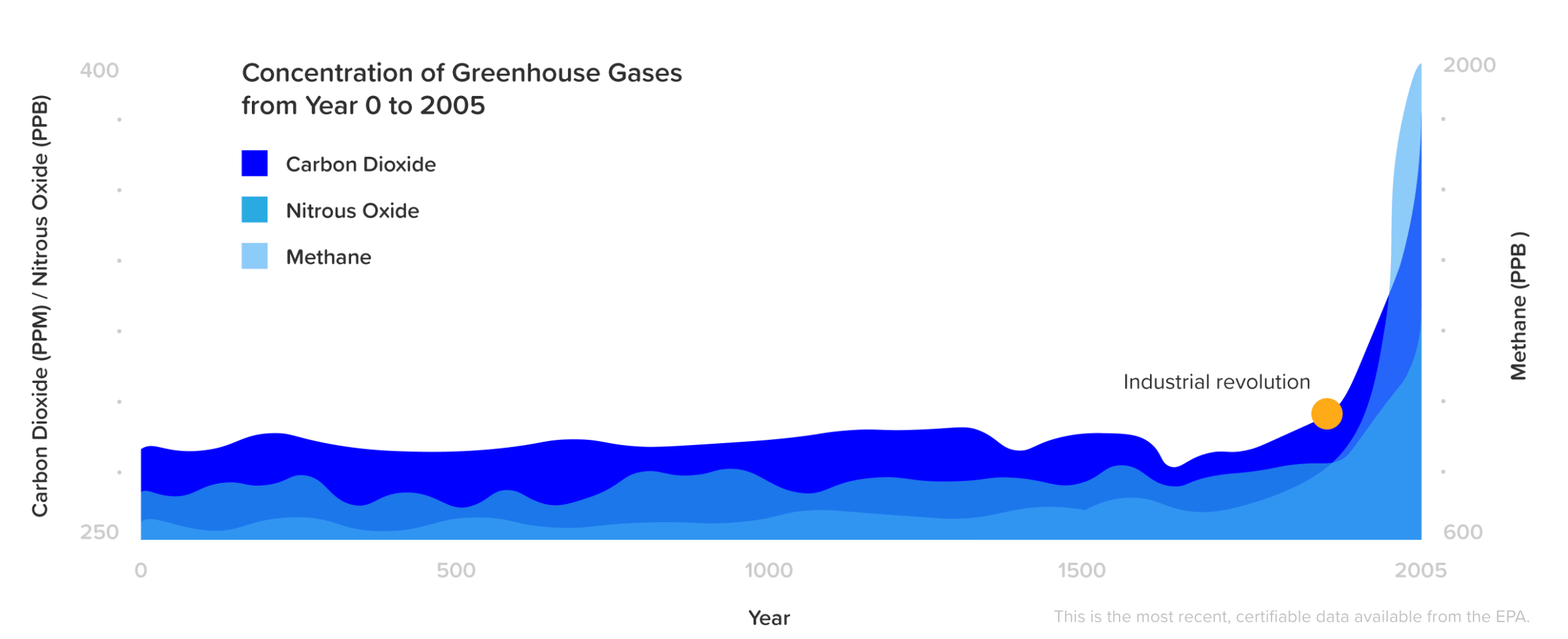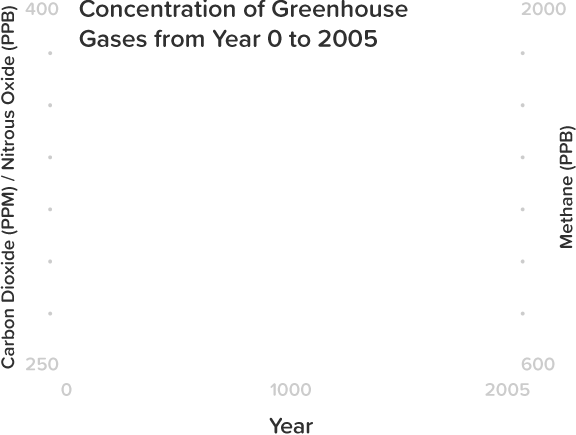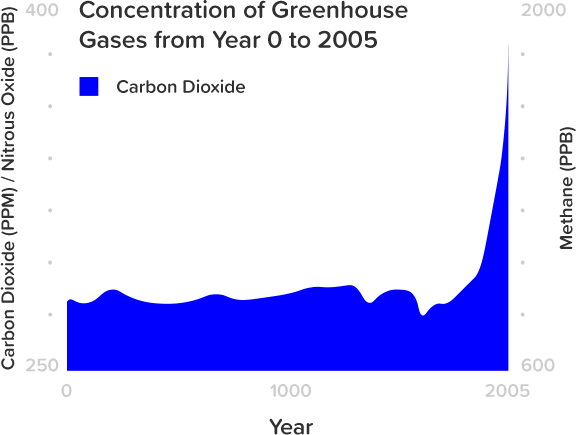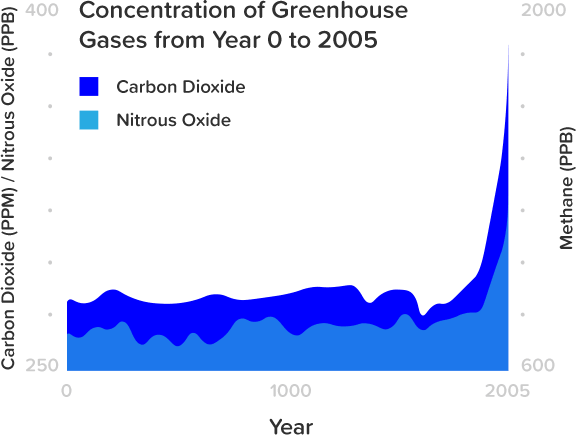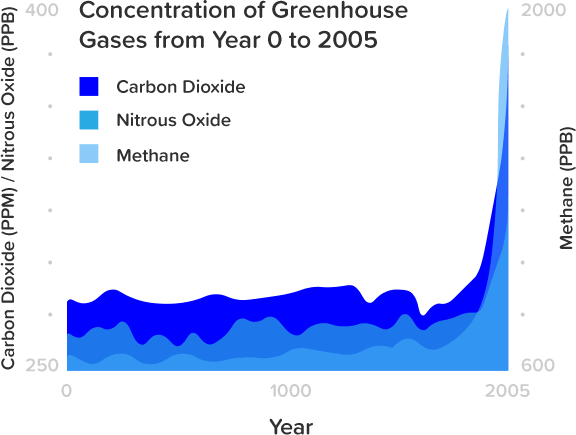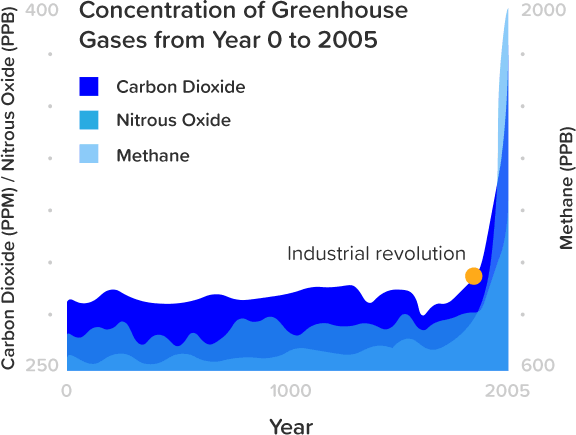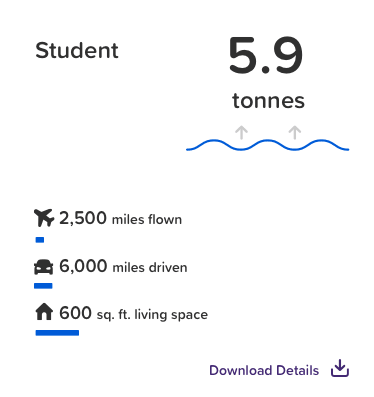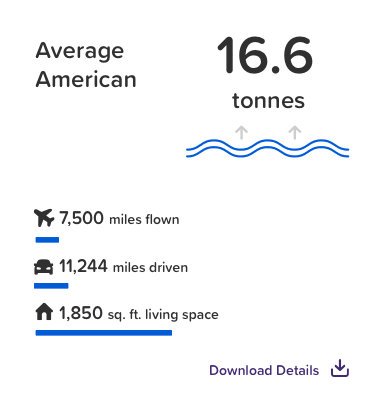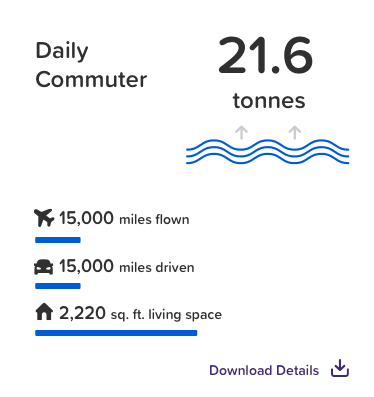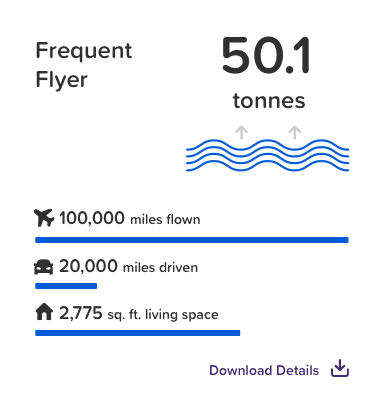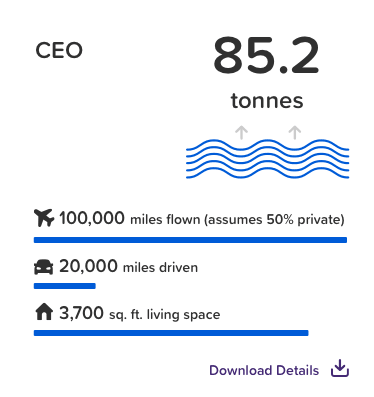55.6pounds
Average amount of red meat Americans consume per year.*
*Average American consumption in 2016
14.5%of global
emissions
If livestock were their own country, they would be the 2nd largest emitter of greenhouse gasses.
How you can help.
Eat less meat. Try limiting consumption to weekends. And when you do go carnivorous, choose grass-fed organic beef.
Sources: Grist, USDA, FAO, Union of Concerned Scientists
4.6tonnes
per year
Average carbon dioxide (CO₂) the typical American passenger vehicle emits.*
*Average based on 11,224 miles of travel in a car averaging 23.5 miles/gallon
50%fewer
emissions
Emissions from electric cars are 50% lower than gas-powered cars, including the recycling of batteries.
How you can help.
Make your next car electric, maximize fuel efficiency by avoiding speeding, limit use of your car’s air conditioning, keep your tires inflated and reducing excess weight. Walk, bike and take public transportation when you can.
Sources: Union of Concerned Scientists
0.8tonnes
Amount of carbon dioxide generated by the average passenger flying roundtrip in economy from New York, NY to San Francisco, CA (about 5,160 miles).
60%less
Biofuels in airplanes produce 60% less carbon emissions than regular jet fuel (on a life cycle basis).
How you can help.
Fly less, consider using the phone or driving for shorter trips. Fly with carriers using biofuels and sit in coach when possible (it has a smaller carbon footprint). If you must fly, purchase carbon tonnes from Cool Effect to neutralize your impact.
Sources: Eco Shift, United Airlines
1,821million
tonnes
35% of U.S. energy-related carbon dioxide emissions are generated by the electric power sector. That’s about 1,821 million tonnes.
16.9%renewable
energy
Electricity seems unlimited, but “clean” electricity such as hydro-electric, biomass, solar, and wind turbines still only accounts for 16.9% of electricity generated.
How you can help.
Sign up for clean green power from your local provider. Turn lights off when you leave a room and switch old bulbs to LED. If you use air conditioning, move your thermostat up 1º, add a ceiling fan and run it counterclockwise to cool things down.
Sources: U.S. EIA, Renewable Energy World, Angie’s List
70pounds
Amount of textiles the average U.S. citizen throws out annually.
6.7%of global
emissions
The consumption of clothing per global citizen per year accounts for about half a tonne (442Kg) of greenhouse gas emissions.
How you can help.
Buy less, buy local and purchase clothes made of longer-lasting materials, like linen and wool. Also try recycled clothes or consignment shops.
Sources: Forbes (2015), Council for Textile Recycling, Quantis & ClimateWorks, EPA
60.3million
tonnes
Amount of food going to waste each year in the U.S.
26.2gigatons
If 50% of food waste is reduced and we adopt a plant-based diet by 2050, 26.2 gigatons of greenhouse gas emissions could be avoided.
How you can help.
Carefully plan your meals, avoid unnecessary purchases, eat leftovers, and don’t be afraid of the “ugly” fruits and vegetables (they’re usually the best).
Sources: USDA, Drawdown: The Most Comprehensive Plan Ever Proposed to Reverse Global Warming. Page 43
9.6pounds of
carbon emissions
The average FedEx package is associated with about 9.6 pounds of carbon emissions.
162.6billion
packages
Average amount of boxes and letters delivered around the world each year by FedEx, UPS, and the USPS.
How you can help.
Bundle your packages so several items can come in one delivery. Try to avoid ordering next day, as you make it harder for delivery services to organize efficient deliveries.
16.6tonnes per
year
The average American emits around 16.6 tonnes of carbon per year.
1tonne
It may not seem like much, but 1 tonne of carbon pollution is about the size of a two-story house. Imagine how many houses you’ve filled in your lifetime.
How you can help.
Start small and purchase carbon offsets from Cool Effect. You’ll neutralize your personal footprint and help support projects that reduce emissions on a global scale.
Donate NowReduce Your Carbon
As carbon footprints increases, so must our efforts to reduce them. Donate now and start reducing your carbon footprint.
Donate NowJoin Our Community of Over 500K Climate Fighters
Thanks for subscribing to our newsletter!
Sign up to receive climate news and tips on how you can make a personal impact.
